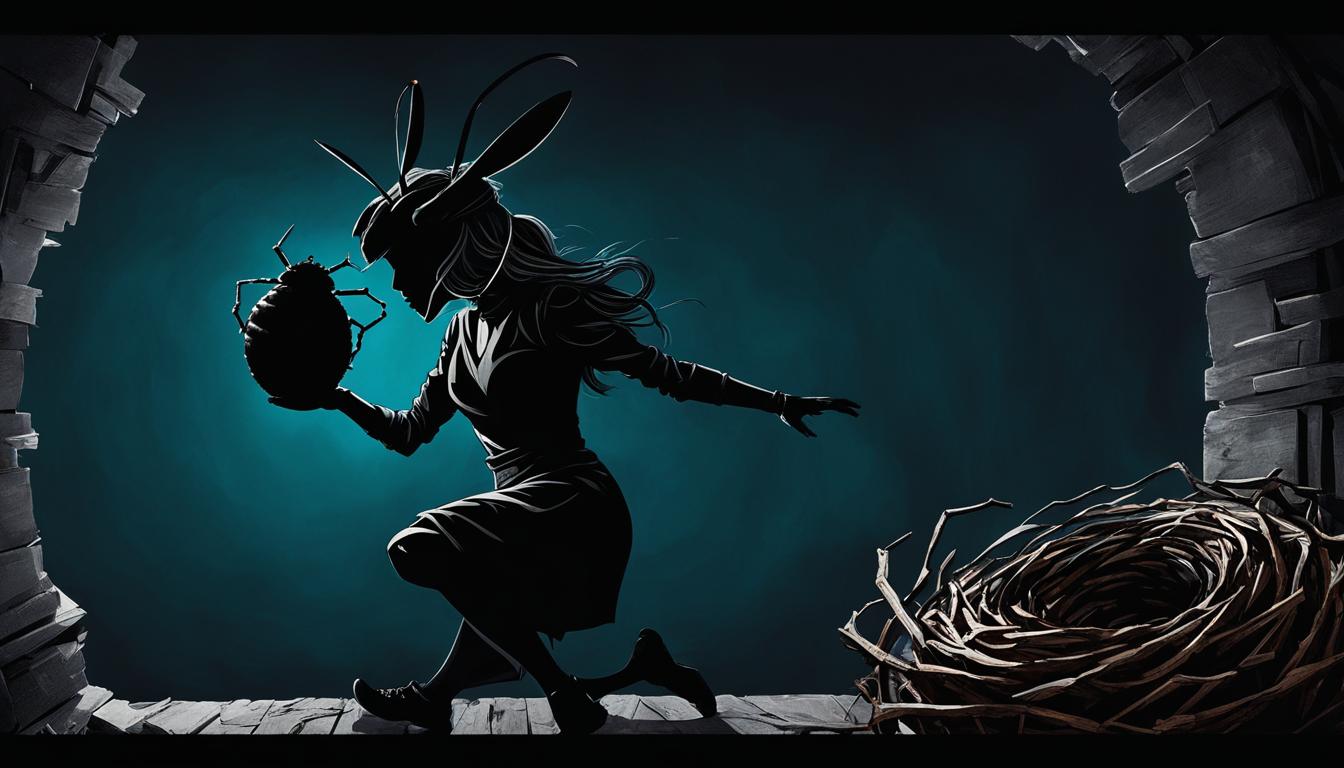If you’re a fan of gripping crime fiction and audiobooks, you won’t want to miss “The Girl Who Kicked the Hornet’s Nest” by Stieg Larsson. This audiobook review will take a deep dive into the final installment of the internationally acclaimed Millennium series, exploring Larsson’s writing style, the narration quality, and the critical reception of the book.
Whether you’re new to the series or a long-time fan, this review will provide valuable insights into what makes “The Girl Who Kicked the Hornet’s Nest” a must-listen audiobook. So sit back, plug in your headphones, and get ready for an adventure with Lisbeth Salander and Mikael Blomkvist in the high-stakes world of Swedish crime.
About Stieg Larsson
Stieg Larsson was a Swedish journalist and author born in 1954. He is best known for his Millennium series, with his posthumously published novel The Girl Who Kicked the Hornet’s Nest being the third and the final installment.
Larsson’s writing style is marked by its stark realism and ability to shed light on social and political issues. Prior to his death in 2004, he worked as an investigative journalist and an expert on far-right extremist organizations in Sweden.
| Works | Publication Year |
|---|---|
| The Expo Files: Articles by the Crusading Journalist | 2009 |
| The Millennium Series (includes The Girl with the Dragon Tattoo, The Girl Who Played with Fire, and The Girl Who Kicked the Hornet’s Nest) | 2005-2007 |
Larsson’s contribution to crime fiction has been significant as a trailblazer in Sweden’s literary scene. His influence on contemporary Nordic Noir and the overall crime fiction genre is undeniable. His memorable characters, enigmatic plots and underlying social commentary have ensured a large fan base in Sweden and across the world.
Overview of “The Girl Who Kicked the Hornet’s Nest”
“The Girl Who Kicked the Hornet’s Nest” is the final installment in Stieg Larsson’s Millennium series. The book picks up right where the second book, “The Girl Who Played with Fire,” left off, with protagonist Lisbeth Salander critically injured and in police custody.
The plot follows Lisbeth’s trial for multiple murders and her efforts to clear her name. Meanwhile, journalist Mikael Blomkvist is investigating a sex-trafficking ring that reaches the highest levels of government, which may also provide evidence to support Lisbeth’s innocence. As the trial unfolds and secrets are revealed, both characters find themselves in grave danger.
The book explores the themes of corruption, abuse of power, and the struggle for justice, making it a powerful and thought-provoking read. The main characters, Lisbeth and Mikael, are complex and multi-dimensional, with their struggles and flaws further enhancing the story’s impact.
Overall, “The Girl Who Kicked the Hornet’s Nest” is a thrilling conclusion to the Millennium series, tying up loose ends and leaving readers satisfied with a captivating ending.
Narration and Production Quality
When it comes to audiobooks, narration and production quality can make or break the listening experience. In the case of “The Girl Who Kicked the Hornet’s Nest” audiobook, the voice actor’s performance and pacing, coupled with the production quality, create an immersive experience for the listener.
The narrator, Simon Vance, captures the essence of the characters with his nuanced and expressive performance, making it easy for listeners to distinguish between the various characters. His pacing is impeccable, allowing listeners to follow along without feeling rushed or bored.
The production quality of the audiobook is top-notch, with no distracting background noises or inconsistent volume levels. The sound effects and music, when used, complement the story without overpowering it, enhancing the overall experience.
“Vance’s narration brings the characters to life, making it an enjoyable listening experience from start to finish.” – Audiobook review
Character Development and Plot
One of the most remarkable aspects of “The Girl Who Kicked the Hornet’s Nest” is the character development depicted throughout the story. Larsson creates a diverse cast of characters with unique motivations, backgrounds, and personalities, each of which undergoes a transformation by the end of the book.
The protagonist, Lisbeth Salander, is a prime example, as she evolves from a deeply troubled and mistrustful individual to a more open and self-assured person who trusts and relies on a circle of friends. Additionally, journalist Mikael Blomkvist is also a well-developed character, as he learns to balance his ethical obligations with his intense desire to uncover the truth.
The plot analysis is equally impressive, with Larsson skillfully weaving together different storylines, each with its twists and turns. The plot unfolds with unexpected revelations that keep the reader engrossed, and the stakes are raised as the story progresses.
“It was apparent that his former colleagues at Milton Security had left Salander for dead. And then, Vega would bet, they had all nodded and moved on to other professional or personal problems. No one had missed Salander – and few had known she ever existed.”
As the quote above shows, the plot is centered around uncovering the truth and exposing corruption, leading to a thrilling and high stakes race against time. Overall, the complex plot and admirable character development make “The Girl Who Kicked the Hornet’s Nest” a standout work of crime fiction.

Themes and Social Commentary
“The Girl Who Kicked the Hornet’s Nest” is a masterclass in tackling complex social and political issues while staying true to an engaging thriller narrative. Stieg Larsson uses the book to comment on real-world issues such as gender inequality and corruption in his native Sweden. Through his characters, he offers insightful perspectives on power dynamics and the consequences of abuse of power.
The theme of gender permeates through the book, where the protagonist Lisbeth Salander is a survivor of physical, emotional, and sexual abuse. Larsson uses Salander’s character to highlight the harsh realities of misogyny and the justice system that often seems to work against women in cases of abuse. In her journey towards redemption and retribution, Salander challenges the patriarchy and becomes a symbol of female resilience.
The book also portrays the dark side of bureaucracy and the repercussions of political corruption. The theme of corruption is exemplified by the antagonist, Zalachenko, whose past and present are entangled in a web of power and corruption. These themes are further reinforced by the portrayal of the Swedish Security Service (SAPO) as an institution that favors political expediency over justice.
“‘All ordinary forms of crime are about money or revenge, or sometimes both. But ideology, now that’s the cruellest and most dangerous thing of all.'” – Stieg Larsson, “The Girl Who Kicked the Hornet’s Nest”
Through these themes and social commentary, “The Girl Who Kicked the Hornet’s Nest” ultimately stands as a poignant reminder of the importance of speaking truth to power and seeking justice in an imperfect world.
Comparison to Previous Installments
In comparing “The Girl Who Kicked the Hornet’s Nest” to its predecessors, “The Girl with the Dragon Tattoo” and “The Girl Who Played with Fire,” it is clear that Larsson’s writing style remains consistent throughout the trilogy. However, the third installment is by far the most action-packed, with a greater sense of urgency and higher stakes than the previous two novels. While the focus remains on Lisbeth Salander and Mikael Blomkvist, the supporting characters are more fleshed out in “Hornet’s Nest,” allowing for a more complex and intriguing plot. Overall, readers will find that “The Girl Who Kicked the Hornet’s Nest” is a satisfying conclusion to an already captivating series.
“The sense of closure is palpable throughout the narrative, and the growth of the characters makes for a more satisfying reading experience than in the previous installments.”
Critical Reception
Since its release, “The Girl Who Kicked the Hornet’s Nest” has received critical acclaim from various literary critics. Many praised the book’s complex plot, well-developed characters, and social commentary, making it a fitting conclusion to the “Millennium” series.
“Larsson manages to pull off a thrilling finale to his trilogy, cementing his place as one of the great crime fiction writers of all time.”
However, some critics noted that the book could get bogged down with too many subplots and political references, making it a more challenging read than its predecessors.
“While still a solid book, ‘The Girl Who Kicked the Hornet’s Nest’ may not be as accessible as its predecessors, requiring a more dedicated and patient reader to fully appreciate its nuances.”
In terms of audiobook narration, many listeners praised the voice actor’s performance for capturing the unique personalities of each character, bringing them to life in a vivid and engaging way. The production quality also received high marks, with clear and crisp audio throughout.
Overall, “The Girl Who Kicked the Hornet’s Nest” received positive critical reception, securing its place as a beloved classic in the crime fiction genre.
Conclusion: Final Thoughts on “The Girl Who Kicked the Hornet’s Nest” as an Audiobook
Overall, “The Girl Who Kicked the Hornet’s Nest” by Stieg Larsson makes for an enthralling audiobook experience. With its complex plot, well-developed characters, and thought-provoking social commentary, the story keeps the listener engaged from start to finish.
The narration by Simon Vance is top-notch, with seamless transitions between characters and well-paced delivery. The production quality is also excellent, with clear audio and no distracting background noise.
While it may not be quite as gripping as the first installment, “The Girl with the Dragon Tattoo,” or as action-packed as “The Girl Who Played with Fire,” “The Girl Who Kicked the Hornet’s Nest” still manages to stand out as a compelling read/listen.
If you are a fan of crime fiction, strong character development, and socially relevant themes, then this audiobook is definitely one to add to your collection. Highly recommended!



